If you’re a DJI Mavic 3 Pro owner, you might be chomping at the bit for an upgrade. The Mavic 3 first released back in November of 2021, so that means it’s coming up on 3 years old. Since then, it’s been the main drone that I’ve used for all of my work and travel. It did get a slight refresh in April of 2023 with the introduction of the Mavic 3 Pro that really only added a third camera – the 70mm medium telephoto lens that I thought really came in handy when shooting projects where I wanted to get closer to the action.
I’ve always been of the frame of mind that the 166mm 7x telephoto camera was just way too tight to be used on a drone, so I really enjoyed that middle ground focal length.
Comparing DJI’s New Mid-Tier Contender: The Air 3S
After 3 years, even if the piece of gear you’re using is the best, sometimes you just get the itch to replace it. I know that if I’ve been using something for an extended period of time, I start to wonder if there’s anything else out there that’s better or maybe provides a better user experience. And in this case, the Air 3S is the newest drone from DJI, but it doesn’t replace the Mavic 3 Pro. Instead, it’s their new mid-tier drone lineup, so it actually falls underneath the Mavic 3 Pro in their entire folding drone lineup and it’s less expensive, but it’s the newest.

Mavic 3 Pro vs. Air 3S: Price Comparison
Like when you look at the price of these two drones, it’s actually pretty crazy how much more expensive the Mavic 3 Pro is than the Air 3S – or depending on how you look at it, it’s pretty crazy how cheap the Air 3S is for what you get. Now this new drone is a replacement to the Air 3, and if you remember in my comparison between that drone and the Mavic 3 Pro, I mentioned that these two drones were very comparable considering the difference in price. But with the upgrades made to the Air 3S, has it finally bumped the king of folding drones out of its throne?

Understanding My Comparison Approach
My comparison videos are always made with the intention of helping you understand which drone is best by taking into account all of the important factors. That’s the age of both of these drones, the price of both of these drones, as well as the available technology onboard in both the camera and the airframe.
Now chances are if you’re watching this video, you’re in one of two groups of people: you might already own the DJI Mavic 3 and you’re wondering if the new DJI Air 3S is enough of an upgrade for you to completely switch platforms, or maybe you own an older drone or you’re looking to buy your first drone and you want to upgrade to one of DJI’s higher-end folding drones and you want to know which is best for you – the Air 3S or the Mavic 3 Pro.

Initial Recommendations: Should You Switch?
Well, I’m going to answer both those questions for you right here right off the bat, and then in the second portion of the video, we’re going to go into some crazy detail to really determine which of these drones is best in both the camera as well as the airframe.
So right now, if you own the Mavic 3 Pro, chances are you’ve sunk a lot of money into that platform – cases, batteries, ND Filters, and anything that you may have accumulated over the years. To completely pivot to a brand new platform where you would need to start from scratch, I’m not totally sure it would be worth it. I think the Air 3S is an all-around better drone as you’ll see in our comparison, but is it enough to completely ditch your current setup? Probably not.
Instead, if you’re comparing both of these drones looking to upgrade from a mini drone, maybe a really old drone like an original Mavic Pro, or if you’re looking to buy your first drone and want to go for a higher-end option, I think it would be wise to purchase the Air 3S over the Mavic 3 Pro because it’s an all-around newer platform that excels over the larger drone in quite a few areas, and your overall cost of ownership will be lower. The price of the drone, extra batteries, other accessories, and potential repairs down the line would all be cheaper.

A Deep Dive into Camera Capabilities
All right, now it’s time to break things down and go in-depth in comparing both of these drones. And just to kind of keep things clean and organized, why don’t we break this up into two different sections? First, we’ll talk about the camera, and then we’ll talk about the airframe. Spoiler alert: the Air 3S is going to be pretty dominant throughout this entire comparison.
Comparing the Camera Hardware: Mavic 3 Pro vs. Air 3S
Despite its 3-year age, the DJI Mavic 3 Pro still has the best camera hardware of any folding drone. Not only does it have three separate cameras giving you three different focal lengths, but the main camera also outclasses any other drone with a larger 4/3 sensor. Bigger drones can carry bigger cameras, and in this case, you get a great mixture of an awesome main camera and two other lenses or cameras to complement your shots if you want to add some compression.

Specs vs. Practicality: Real-World Camera Comparison
The Air 3S, on the other hand, only carries two cameras with the main wide camera and medium telephoto camera matching the same focal lengths as the Mavic 3 Pro. In fact, that 70mm medium telephoto camera is identical on both of these drones, so the main difference is that main shooter. In this case, it’s a 1-inch sensor but uses a quad-bayer sensor to squeeze out a full 50 megapixels.

Here are all of the notable specs side by side, and man, these two cameras are neck and neck in a lot of areas. The Mavic 3 Pro definitely has the overall edge, however, with three total cameras, a bigger sensor on the main camera, 5.1K video shooting, a high bit rate, true D-LOG shooting (not just D-LOG M), and probably the biggest hardware standout of all – a variable aperture between f/2.8 and f/11.
The Air 3S, on the other hand, does have a few areas that make it better, like the higher megapixel count for more detailed photos, an f/1.8 aperture to let in more light, a 2.7K vertical video shooting mode that allows you to use the full height of the sensor, an HDR image processing pipeline that works in all video shooting scenarios, a seven-shot auto exposure bracketing mode, and the new Free Pano shooting mode.

Image Quality Testing: Clarity, Colors, and Dynamic Range
Now if you made me choose which of these drones I wanted to purchase solely based on the spec list on paper of the cameras, I would choose the Mavic 3 Pro as it has a more tangible set of features and hardware. When you look at the upgrades introduced in the Air 3S, I feel like they’re all just for vanity – like they’re manufactured upgrades. So for example, the 50 megapixel photos – it’s really just a 12 megapixel sensor that uses a quad-bayer sensor to upscale our photos to 50 megapixels.

Also, the f/1.8 aperture really just doesn’t do it for me. I’d understand having a lower aperture on a lens that goes on a mirrorless camera so that you can improve the amount of bokeh behind the subject, but on a drone where literally everything is in focus, aperture just doesn’t really do it for me, and also it really doesn’t improve the low light shooting, which we’ll get to here in just a little bit.
But also looking at all the software features added like the vertical shooting mode, the seven-shot auto exposure bracket, as well as the Free Panorama – could all be added to pretty much any DJI drone, but because this is the newest drone, it gets a couple of these new camera features that probably won’t make their way to older drones.
But on-paper specs are only one thing – image quality and how the camera actually looks is a completely different story.
Image Quality Testing
Okay, look, I know that people hate talking about the specifications, but in a comparison video, I think it’s pretty necessary to figure out what we’re working with and what the differences are. Now though, I want to take a spin through some comparison shots between both of these cameras. I took these drones out to a few different locations around Philadelphia with the main focus of trying to understand how each of these cameras look to the eye.

While going through what I captured, I want to make some notes on overall image clarity, colors, and dynamic range. The three spots that I flew were an abandoned building in Camden, which is just over the bridge in New Jersey, I hit the skyline from a few different vantage points, and then I also wanted to grab some shots along the Schuylkill River of Boat House Row and the art museum.
I know it’s really hard to tell the difference between these cameras here in a YouTube video, so I’m going to leave a link in the description below to download these clips and mess around with them in their full resolution on your own computer and your own screen so that you can see them without the compression here online.
Color and Temperature Adjustments
Okay, so the first and probably most notable difference that I want to point out is just how much warmer the camera on the Air 3S is – or maybe how much cooler the Mavic 3 Pro’s camera is in comparison. All the clips that you guys are going to be watching throughout this video will be captured at 5600 Kelvin to match the temperature of the daylight, and the shots around the abandoned buildings really show how the warmer image of the Air 3S is almost too warm.

I ended up backing off the white balance to 5200 Kelvin, which seemed to do the trick and give me more of a neutral look color image. Throughout my time in this area, I used 5600 Kelvin as my baseline and in some areas tried repeating shots with different white balance values to find what looked most natural.
To pivot to a completely different scene of the Philadelphia skyline with the sun blasting on the front of the buildings, the 5600 Kelvin white balance on the Air 3S’s camera actually looked like it was spot-on, and I didn’t need to make any changes to fix the color. Right in the camera, on the other hand, the Mavic 3 Pro’s camera looked way too cool from the same vantage point for my liking, which is almost over-amplified by the blue sky and the blue buildings leading to an overall cool feeling image.

I actually went back and refilmed the same shot at 6,000 Kelvin, so increasing my value by about 400, and that seemed to do the trick. This gave me a much better looking image with better colors right out of the camera.

Evaluating Image Quality: Air 3S vs. Mavic 3 Pro
So overall through these comparisons, I found that the Mavic 3 Pro’s camera can lean more towards a cooler image while the Air 3S’s camera can lean more towards a warmer image, and you can move around the white balance based on your scene. So if what you’re looking at is too warm or too cool, just adjust your white balance to make your life easier so you don’t need to correct the colors after the fact – do it in camera and you’ll thank yourself later.

So my baseline for the Mavic 3 Pro is 5600 Kelvin, and when it starts to seem a little bit too cool, I’ll go and bump it up to 6,000 Kelvin, and that usually gets me in the right area. And then I go the opposite way on the Air 3S – if it seems to be a little bit too warm at 5600 Kelvin, I’ll back it off to 5200 Kelvin, and that gets me right where I need to be.
I’d always recommend using a manual white balance for anything you shoot – it’ll make your life so easy as I’ve mentioned, but just know that for the rest of this video, I used 5600 Kelvin as my baseline. I shot a lot of my clips using that white balance, but then I also would adjust it as I saw fit so that I could get some nice clean colors to really compare the video here between these two drones.
Photography Comparison Between Mavic 3 Pro and Air 3S
In this video with that said, in my opinion with the time that I spent flying these drones back to back and then sitting down and spending a considerable amount of time analyzing the clips, I’ve got to say that I am really preferring the Air 3S footage over the Mavic 3’s video.
Put the size of the sensor out of your head for a second, because I know that that is what everyone is going to make their main focus about, and just really taking these clips to appreciate what DJI is able to do with the software processing from that smaller sensor.
To go through a few examples to help bolster my point, let’s start with this tough shot flying towards the art museum as the sun is hitting all the buildings in frame from behind, so we’re really relying on good dynamic range to keep this image together. The shot from the Mavic 3 Pro is solid – it’s got a good amount of detail in the shadows and nice colors remain throughout the trees and buildings.
Flipping over to the same shot from the Air 3S though just makes the shot from the Mavic 3 Pro look kind of muddy and overall soft. This image to me looks way sharper with more detail, especially in the shadows – though like looking at the detail in the columns towards the bottom of the frame in the art museum as well as the different window designs throughout the buildings in the background make me not even care that most of the buildings are backlit.
I’d usually wait until the afternoon to get the shot when the sun comes around and hits the buildings from the front, but the dynamic range of the Air 3S and the overall – it really holds this together to make it usable basically right out of the camera.

Putting these shots side by side really shows the differences and I think highlights the term “muddy” that I described the video from the Mavic 3 Pro as. It’s crazy to think that I would ever say that about the Mavic 3 Pro’s camera, especially when comparing it to a drone that is $11,000 less expensive, but here we are. The Air 3S’s camera just produces such a crisp looking frame.
Flying even closer to the skyline to showcase these larger buildings reveals my same findings as the detail of the Air 3S’s camera shines in the intricate windows that make up the sides of these office and apartment buildings. It almost feels like the buildings are being masked in real time as the tops of them feel like they have more separation off of the sky. To put it in simple terms, the sky in the Air 3S’s video looks brighter and it looks darker in the Mavic 3’s video, which makes the buildings seem overall more prominent in the video from the Air 3S.

Take a second to look at the trees too – they seem like they have so much more depth from the camera on the Air 3S, like I can see each individual tree branch, whereas in the shots from the Mavic 3 Pro, the leaves all start to feel like they blend in with each other, producing what I would say is overall a soft looking image in comparison.
This is seen throughout all of the clips where you can see trees and other intricate details like at the abandoned building that I captured. Whether the image is backlit or if the sun is blasting down from behind your drone on your subject giving the camera some good front light, the amount of detail – all in all makes the image straight out of the camera on the Air 3S feels like the frame has so much depth and clarity. It doesn’t feel oversharpened but instead feels more natural and true to life.

To quickly switch gears here, even though the camera hardware is identical, I have to say that the 3x camera also looks way better on the Air 3S, like the image just feels like it has more contrast and is more clear throughout. I found that the 3x camera on the Mavic 3 Pro leans more towards a cool image like the main camera, and sometimes the highlights just seem like they’re completely blown out.
This image for example had an exposure value of 0.0, looked fine on my remote and the histogram, yet the image that I’m left with is something that I think looks pretty bad. The Air 3S image looks way better in my opinion, and I think it just has to do with an improved image processing pipeline on the newer drone. DJI did a great job at making sure that the colors and overall feel of the image matches between both cameras on the Air 3S.
So to me the final verdict is that the Air 3S is truly the better video shooting camera of the two. The clarity, the detail, the colors, the contrast – just everything out of that camera is solid and makes for a more pleasing image right out of the camera. Despite the superior hardware of the Mavic 3 Pro, the image processing on the Air 3S proves to be the differentiating factor here between these two drones.
Now I spent a full day capturing some great shots that are directly comparable between these two drones, some of which I didn’t showcase in this video like the D-LOG footage, some other 3x video, as well as some other locations. So as I mentioned, please go check out the link in the description to download all of this footage for yourself. I’ll finish this piece on video by saying that in almost every comparison that I captured, I prefer the video from the Air 3S.
Photography Comparison
Okay, so with all of the video stuff behind us now, let’s switch over to talking photography. In all the same locations from the abandoned building to the city, I was also capturing some photos, and while all of the videos I shared were completely unedited – like all of those clips you just watched were right off of the SD card – I figured I would share the edited versions of the photos that I took to show you what I was able to pull from the raw files.
These raw files will be available for download so you can try editing them yourself, but sharing a raw photo just doesn’t feel right as I always do a significant amount of editing to my photos to get them looking how I want them.
In this case, I think that the playing field is a bit more level considering the flexibility that comes with editing a raw photograph. I can make both of these images look pretty similar without much effort considering all the masking and editing tools available now in Lightroom.
All of these photos really do need to be edited separately though without just copy and pasting settings between cameras on both drones as the white balance and colors are pretty different – like the same remains true about both cameras: the Mavic 3 Pro leans to be more cool while the Air 3S is consistently warmer, although you can adjust the white balance as much as you want with the DNG files that the drone produces without degrading the image at all.
It’s not like a video clip from a drone where how much you can change the exposure and color really depend on how it was shot in camera. The one thing I will say is that the 50 megapixel photographs aren’t doing the Air 3S any justice in separating itself from the 20 megapixel camera of the Mavic 3 Pro.

You would think that with a resolution that is so much greater you’d be able to crop in on the image and still retain so much detail, but there are some pretty big limitations that come from using a quad-bayer sensor. The Air 3S doesn’t have a full-frame 50 megapixel sensor – it’s truly a 12 megapixel sensor that is being beefed up with some behind-the-scenes magic.
The Mavic 3 Pro, on the other hand, has a true 20 megapixel 4/3 sensor that I think actually retains more detail than the Air 3S’s image. Also something I’ve noticed in my time editing images over the past month or so – I think the files from the Mavic 3 Pro are easier to edit with more range and flexibility. For example, I overexpose my hyperlapses sometimes so that I can drag the shutter to get that motion blur effect. Even when I overexpose the image by a stop, I can bring the photos right back when I edit them in Lightroom.
The same is true with the Air 3S images, but I feel like there’s a little bit more detail lost when I push the exposure too high or too low with this camera. So all in all, if I had to choose a camera that I’d prefer to shoot photos with, it would be the Mavic 3 Pro, but the gap isn’t nearly as big as it was when we discussed video shooting. Like moving forward, I’m going to try and exclusively shoot video with the Air 3S as much as possible, and if I had to shoot video with the 3 Pro, I feel like I’m not getting the best image possible.
From a photo standpoint, I would take either of these drones out if I knew I needed a good set of images because they look pretty similar to my eye after I edit them. Again though, download those raw files for yourself, use some of your presets, and see how far you can push and pull the images to your liking.
Low Light Performance
Okay, so the final thing I want to discuss when it comes to the cameras of both of these drones is low light video shooting, which spoiler alert is completely dominated by the Mavic 3 Pro. Now look, I don’t want to make it seem like the Air 3S is unusable in low light, but the larger sensor of the Mavic 3 Pro helps out way more than the larger more open f/1.8 aperture on the Air 3S.
I also think that the software built into the Air 3S is doing a disservice to the drone. You see, with the Mavic 3 Pro, there’s actually a night shooting mode that allows you to crank the ISO up to 12,800 and noise reduction is run onboard the drone to give you a clean looking file regardless of your lighting conditions right off of the SD card. Like shooting some shots of the skyline here with the Mavic 3 are right in this drone’s wheelhouse – the night mode does a good job of cleaning up the images right there for you.

If you wanted to, you could also run a manual noise reduction on your own in post, which gives you a bit more control over how the image looks, but for the most part the night shooting mode here is going to get the job done. Regardless of which method you choose to use, it’s going to turn out way better than what the Air 3S can shoot, as the all-in-one HDR style shooting mode doesn’t yield the best results.
You see, DJI tried to fit all of their shooting modes into one image processing pipeline that would adapt based on your needs, which sounds like a good idea, but the night shooting just doesn’t come close to the Mavic 3, which is the low light champ. I feel like the clips from the Air 3S look muddy, they look soft, they don’t look all that bright, and it doesn’t have a night mode right? So you can’t just go and flip over to a different shooting mode, or you can’t just get the raw video without any sort of processing added – it’s all built into that one single image processing pipeline that as I mentioned just doesn’t do the best job on cleaning up your nighttime shots.
Okay, so that was probably the most detailed and thorough camera comparison I’ve ever done on my channel, but I had to bring the receipts to back up the claim that I made in my Review video of the Air 3S that this is one of the best cameras they’ve ever put on a folding drone. Sure, the hardware of the Mavic 3 Pro is stand out – it’s way better than what’s in the Air 3S on paper. I think that the photos, the videos, the overall image quality that comes from the Air 3S looks better and therefore I’m going to continue to use it, and I think that that is displayed perfectly through all the examples that I shared with you. It just gives you a more pleasing image and therefore it’s going to be the drone that I use – but it of course, of course is all personal preference.

What did you guys think? What do you think is the better camera system? I know that there’s going to be one major argument and that is the adjustable aperture, and I think that we get into the comfort zone when we have a drone with an adjustable aperture to help dial in our exposure, but have you ever heard of an ND filter? Like literally with the Air 3S, I put the ND32 filter on the front and I fly during the day no matter what – I can adjust my ISO, I can adjust my shutter speed to get my image properly exposed and from there I’m good to go and don’t need an adjustable aperture.
Looking at a photograph at f/2.8 to f/11 is not going to be any different when you’re 300 feet up in the air. The aperture in my opinion is almost like a pacifier – it’s something that you need to lean on, it’s like a crutch to properly expose your image, but if you have the Air 3S or a drone that has no adjustable aperture, just use an ND filter. Just adjust on the fly with your ISO and shutter speed and you’re going to make it work.
But look, overall I really, really want to hear your thoughts down below in the comments on the cameras because I think that the DJI Air 3S is now the new king of folding drones when it comes to image quality. With that though, the dominance of the Air 3S continues as we now move into comparing the airframes of these drones.
Airframe Comparison between the DJI Air 3S and Mavic 3 Pro
So the Air series of drones used to be substantially smaller than the professional level folding Mavic drone, but with the release of the Air 3 airframe, the size of these drones is almost identical. Like sure, the Mavic 3 is definitely a little bit bigger, but not by much. The new Air 3S dwarfs the Air 2S, but it’s for good measure as this drone is an absolute beast.
Just like our comparison of the cameras, let’s break down the design and hardware of each drone and then take a top-down look at the specs of each aircraft. So the overall design of both drones is eerily identical, as are most folding drones nowadays. Both of them unfold from a small compact travel form factor, both have omnidirectional obstacle avoidance with the new camera hardware so the drone can look for obstacles in every direction, both have a tube-style battery that slides into place, both have a USB-C port and SD card slot that’s on the back of the drone, both have an auxiliary LED underneath of the drone – you guys get it. These drones have different styles but at their core have the same functionality that really do deliver a similar experience between both.

However, the Air 3S does introduce a couple of upgrades. The first is pretty easy to spot – it’s the new LiDAR sensor on the front that helps the drone see in difficult situations like when there’s a flat surface with no contrast area for the obstacle avoidance sensors to see what’s in the way. Think of a building with a big white wall that has no windows – this is a time where the new sensor would be a huge help.
Those obstacle avoidance sensors dotted all around the drone also got a nice upgrade to see better in low light as well. So the rating on these sensors have gone from 15 lux in the Mavic 3 Pro and Air 3 to one lux on the Air 3S, and when you look through the sensors using Vision assist, it’s easy to see the difference. When I’m flying around at nighttime or in areas with poor lighting conditions, not only can I see through these cameras, but the drone can also see and displays a radar around the drone as it’s actively picking up obstacles.


This leads to better autonomy all the way around, and it would be awesome to see them continue to improve upon this with more sensors, newer camera hardware, and improved software for hey, maybe flying in pitch dark while still being able to see the obstacles around you.
So even though the LIDAR sensor is one of the biggest visible changes made to this drone, I would say it’s far from the biggest upgrade from say Air 3 to Air 3S or Mavic 3 Pro to Air 3S. In my opinion, the new top speed of 60 MPH is what makes this drone such a standout. This means that it’s 13 mph faster than the Mavic 3 Pro when flying horizontally and gets a bump in its vertical speed as well to make the Air 3S overall more agile.
When you look at these drones, you would think that the Mavic 3 is the faster of both of them just based on the size, but despite the Air 3S not getting a change in the motors or design, it’s still able to substantially improve its speed over the Air 3 by doing one thing – increasing its maximum pitch angle to 36° compared to the Mavic 3 Pro’s 35°. This means that the drone can pitch just a little bit forward to eek out more speed.

Now I have a lot of people point out to me that the Air 3S advertises this maximum speed only when receiving help from a tailwind, as it says right on the DJI website. Although in basically every flight I’ve been able to achieve this maximum speed, but it wasn’t right away – like the drone is quick to get up to a speed of 40 mph and then slowly increases its speed until it finally reaches that maximum of 60 MPH.
This makes this the best drone to chase after a car, chase after a boat or a train, or to cover long stretches of landscape. If you’re say trying to fly over a street or orbit around a mountain, increasing the speed in which you travel is going to make your shot feel more dynamic. I know that sometimes when I’m out flying over trees and have no moving objects in my frame, it’s hard to determine just how fast I’m actually moving.

All around, the agility of the Air 3S is far better than the Mavic 3 Pro to the point where I feel a big difference when I switch between aircraft. I showed this clip in my review of the Air 3S where I was zipping around taking photos of Wonderland in Ocean City, New Jersey, and with the sheer power of the drone, I was able to get from spot to spot where I wanted to take photos so quickly. The drone felt like it was snapping into place despite the windy conditions down the shore.
The memory card actually wasn’t able to write the data of a 50 megapixel five-shot auto exposure bracket fast enough, so when I got to each spot, I’d have to sit there and wait until I could press the shutter button and move on to my next position. This is thanks in part to the ascend and descend speed of over 20 mph – this drone can climb and dive down insanely fast, which as you just saw can really help with getting from spot to spot, but it also makes this drone feel insanely powerful.

This to me is a big upgrade over the Mavic 3 Pro – 13 extra miles per hour to fly with the Air 3S. I’ve been asking for years for a faster Mavic drone and here we finally have it. All in all, it really does make the flight experience better. I mean, it gives you a faster moving drone to capture more dynamic shots so that you can chase after a moving subject or you can cover a landscape in a quicker fashion. It also makes just getting from spot to spot easier – like when I’ve got to come down, land, swap batteries, and take off to get back into position, it seems so much more fast with the Air 3S because it’s quick to get up off the ground and quick to descend back down to the ground.
To give us a top-down look, here’s a full list of all the important specs that you might want to know about how a drone performs – from speed to flight time to range. What do you notice? It’s that the Air 3S outperforms the Mavic 3 Pro in every single category. I couldn’t find a spot or even think of something that is intangible that makes the Mavic 3 Pro better in any way. The Air 3S flies longer, it can fly further, the connection is stronger with O4, it’s quieter – as I mentioned over and over again, it’s faster, it has more onboard storage. There seriously is no redeeming quality about the Mavic 3 Pro that still makes it better.

This has been the case since the release of the original Air 3 over a year ago. Like when I compared the Mavic 3 Pro to the Air 3, I mentioned how much better that airframe was in the category of range, flight time, speed, image transmission – literally everything was better about that airframe, and now with the improvements they’ve made in the Air 3S, it kind of feels like the final nail in the coffin of the DJI Mavic 3 Series that says hey, we really need a Mavic 4 now to compete with DJI’s mid-tier drone and make that professional drone stand out once again.
Now finally I want to touch on the remotes because we have a fairly similar offering between both of these drones by way of the stock remote controller that can be used with your phone as the screen and a remote controller with a built-in screen. To be exact, the Mavic 3 Pro uses the RC-N2 and RC-1 while the Air 3S uses the RC-N2, RC-N3, and RC-2.

The reason for these different remotes is the image transmission system that each drone uses, with the Mavic 3 Pro running on O3+ and the Air 3S running on O4. So the standard remote offerings are pretty much identical, but the Mavic 3 Pro has the option of using the RC Pro, which is their professional remote controller that to this day is by far the best remote experience I’ve had with the drone. It has a 1,000 nit 5.5-inch screen, it runs full Android, has a mini HDMI out, and the processing power lets this remote boot up and connect to your drone within seconds. This remote launched with the Mavic 3, so to get speculative, it would be nice if an RC Pro 2 came out with an eventual Mavic 4 that runs O4 to be also used with the Air 3S.

And so on that note, why don’t we wrap this video up with some final thoughts? I think that this is by far the longest comparison video I’ve ever uploaded to my channel, but it was deserved because when you go and replace your go-to drone in the Mavic 3 – for the past 3 years this has gone with me on all of my travels, on most of my commercial shoots, it has the most flight hours I’ve ever put probably on a single drone – it’s almost sentimental. Like I think about all of the places I’ve been to, all of the views I’ve captured with this drone, and now it’s just going to sit in my office on the desk that is with all of my other older drones to be replaced by the Air 3S.
Final thoughts on the DJI Air 3S
Like yeah, that is definitely going to deserve a much longer comparison video, and the Air 3S is going to be my new drone. It is going to live in my backpack, it’s going to take all the hyperlapses I post on my Instagram, it’s going to take all of the video that I capture and share here on my channel from my travels, it’s going to capture all of the photos and videos that I deliver to my clients. This is now my new workhorse until a Mavic 4 comes out, because of course now that we see what an Air 3S can do, we can only imagine what a Mavic 4 is going to come out with in terms of its airframe and in terms of its camera – it’s really got to blow us away and it’s probably going to put the Mavic 3 to shame considering the Air 3S can come in and stomp all over the Mavic 3 from a camera and from an airframe and aircraft standpoint.
So please let me know your thoughts down below. I am still of the frame of reference that if you have a Mavic 3 and you’ve invested all of this money into that platform, it’s probably not wise to go and just jump ship and move over to the Air 3S for a potential Mavic 4 to come out very soon. But if you’re somebody that has been you know rocking with your Mavic 2 or your Mavic 3 or maybe your Air 2S and you’re looking for an upgrade, I think the Air 3S is a solid choice because when you look at the price and how less expensive and how cheap this drone is compared to the Mavic 3 Pro and when you look at the price of extra batteries and the care refresh and maybe potential replacements, the Air 3S is a very compelling option.
So that wraps up my comparison. Please let me know your thoughts down below and as always, I’ll talk to you later. Peace.

Discover more from DroneXL.co
Subscribe to get the latest posts sent to your email.
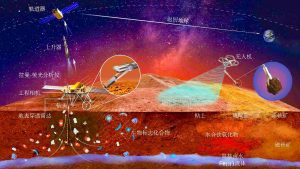
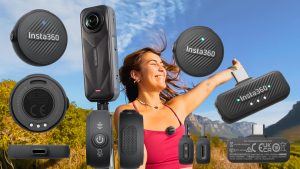
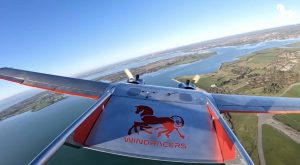
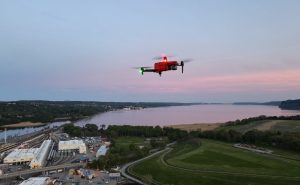
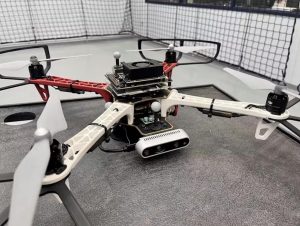
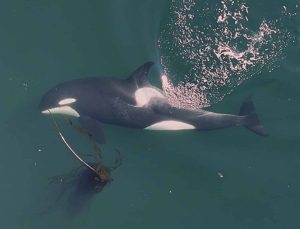
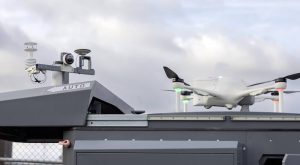




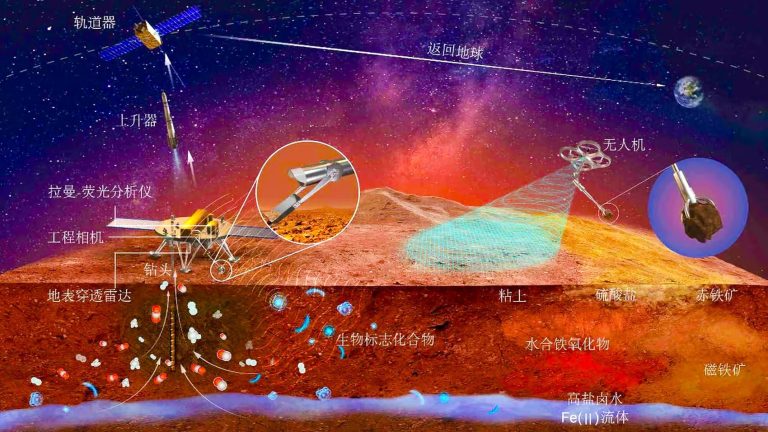
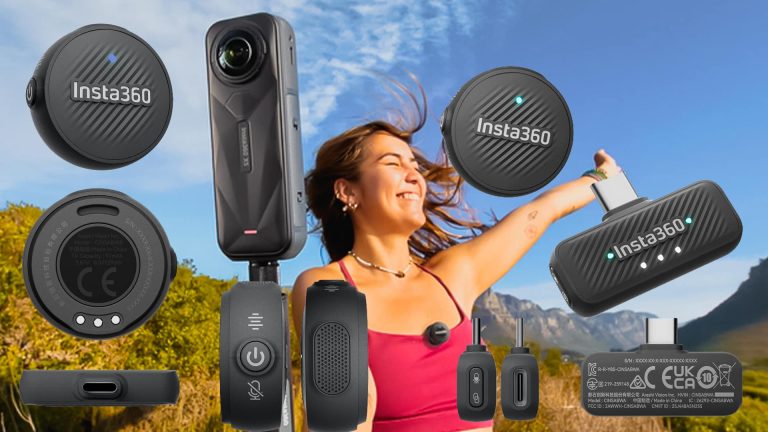
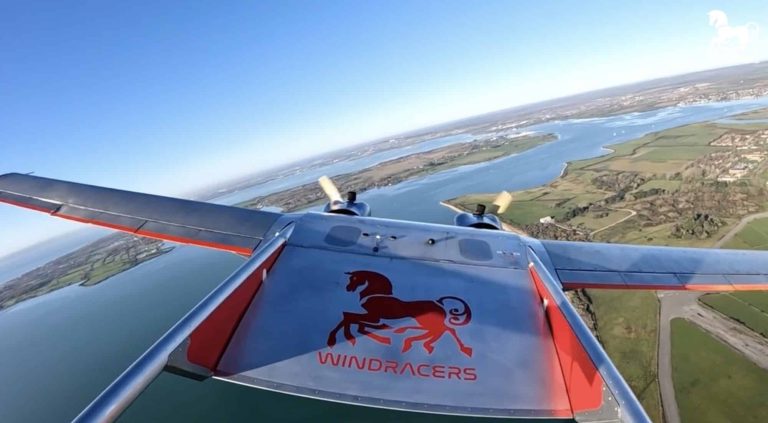
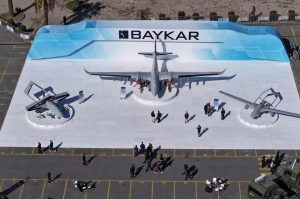
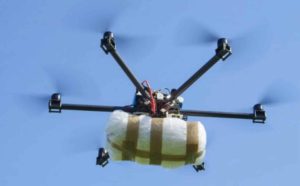

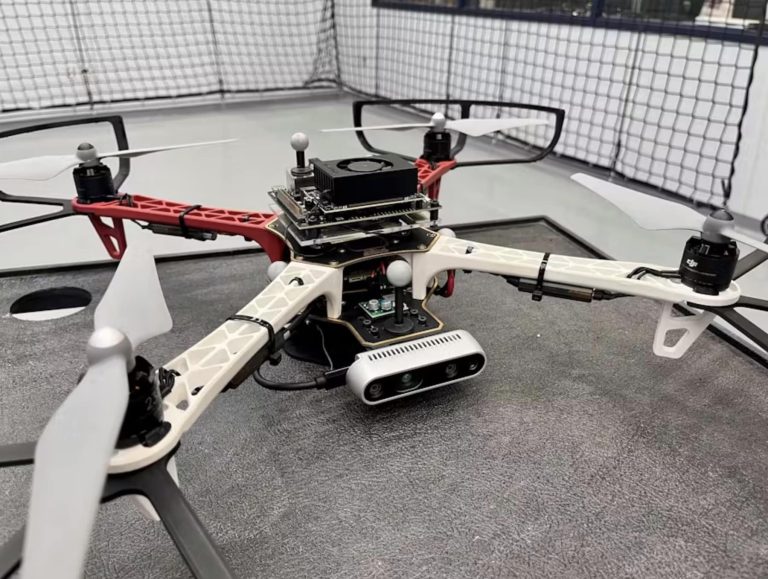
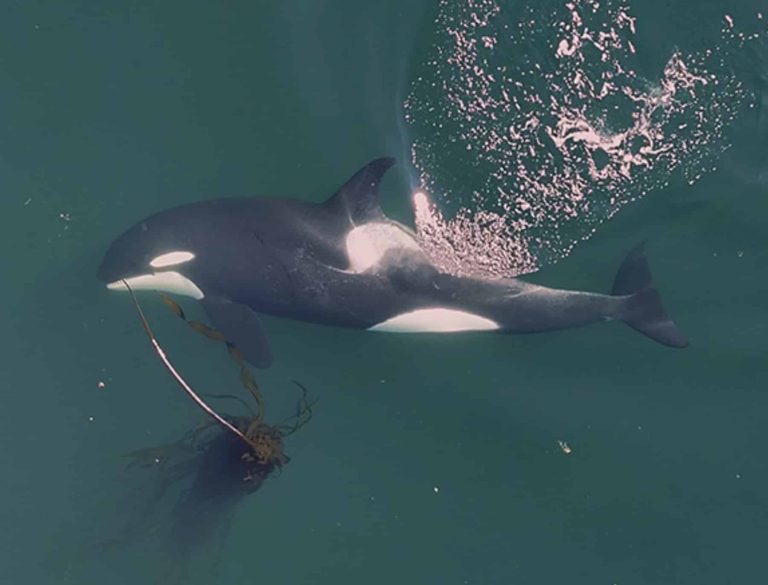
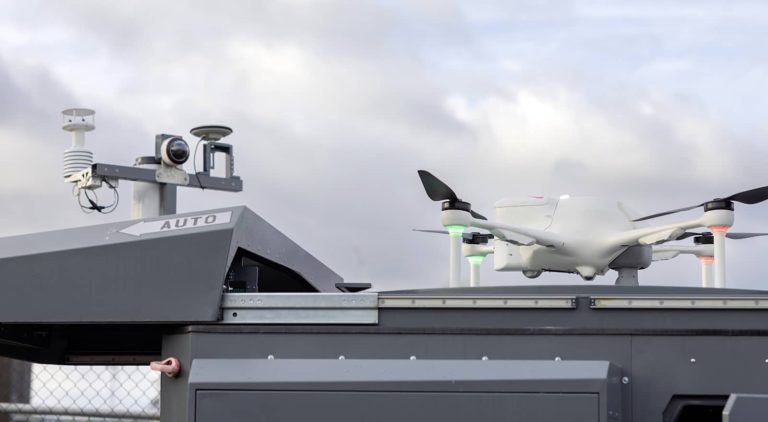

+ There are no comments
Add yours